Triple Bottom Line theory
The design is based on the Triple Bottom Line theory--social responsibility, environmental stewardship, and economic prosperity, which is used to assess projects and business through corporate sustainability solution1. By analyzing the components of social progress, the team challenged and redefined Urban Farmer. Environmental stewardship and economic growth would be achieved by a new food production system, energy cycle, and new public space creation. Specifically, the team considers it from socio-environmental, socio-economic, and eco-efficiency perspectives.
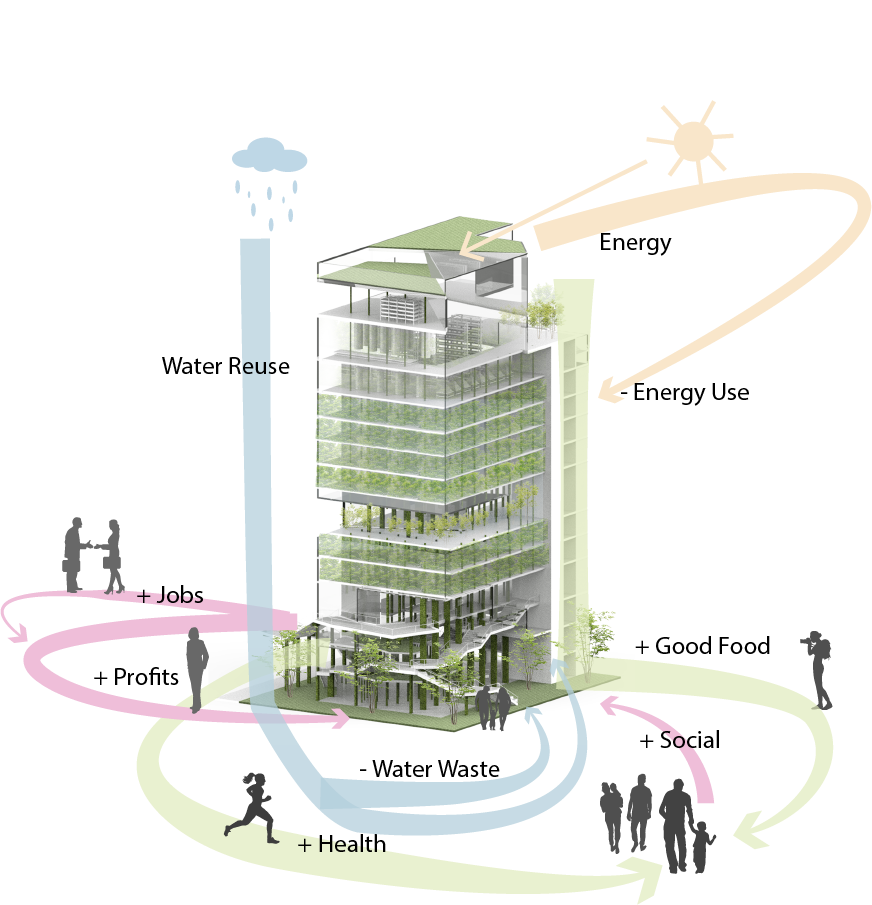
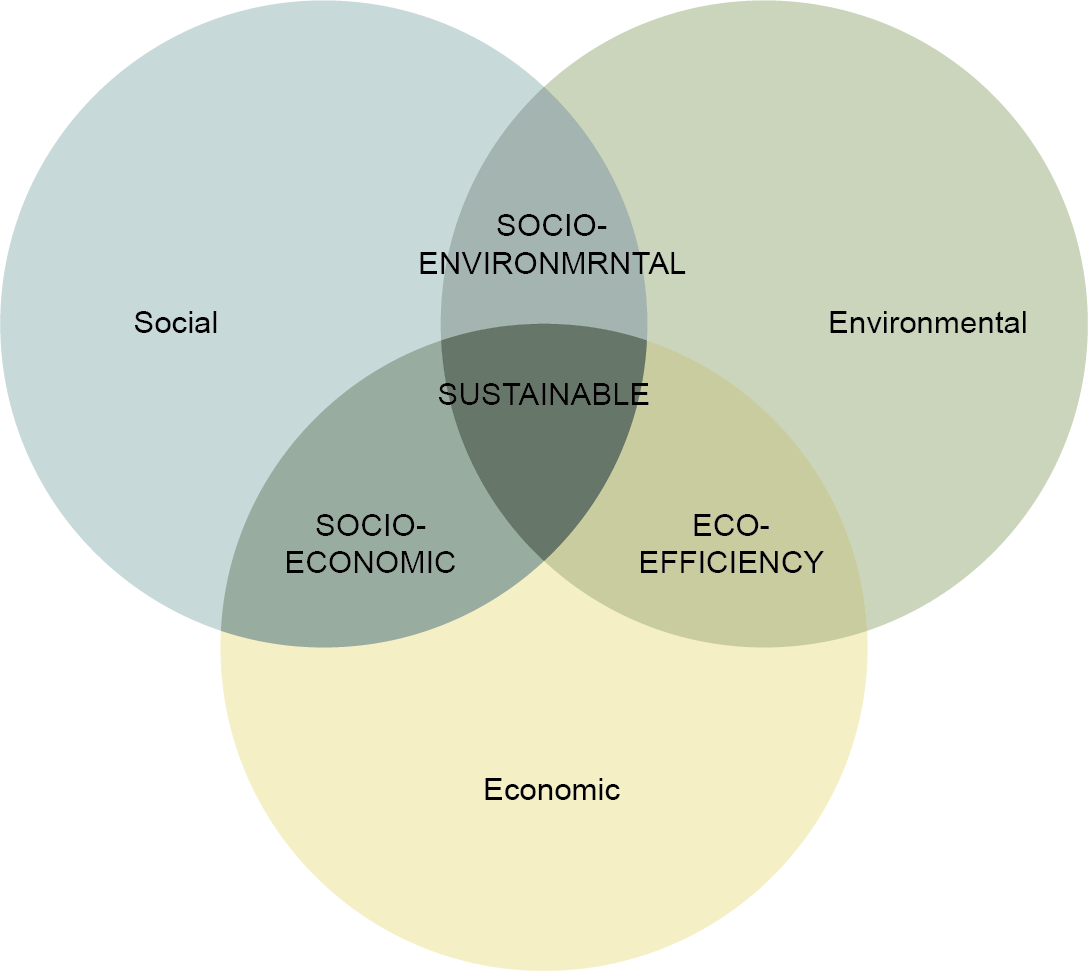
Version 1 Game
The first version will be used for the public, especially for children to learn basic knowledge about the urban agriculture and growing process while planning with the games
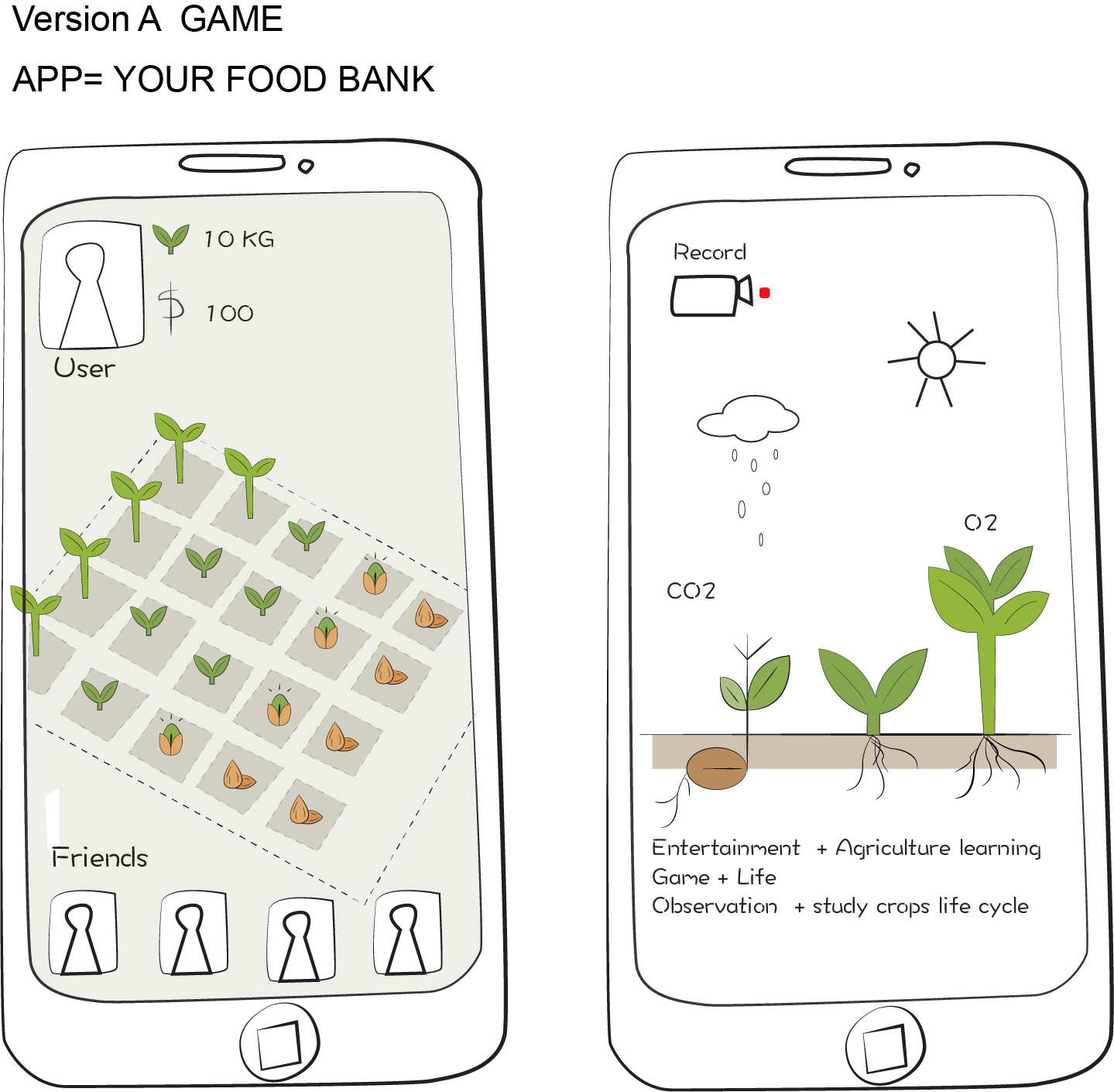
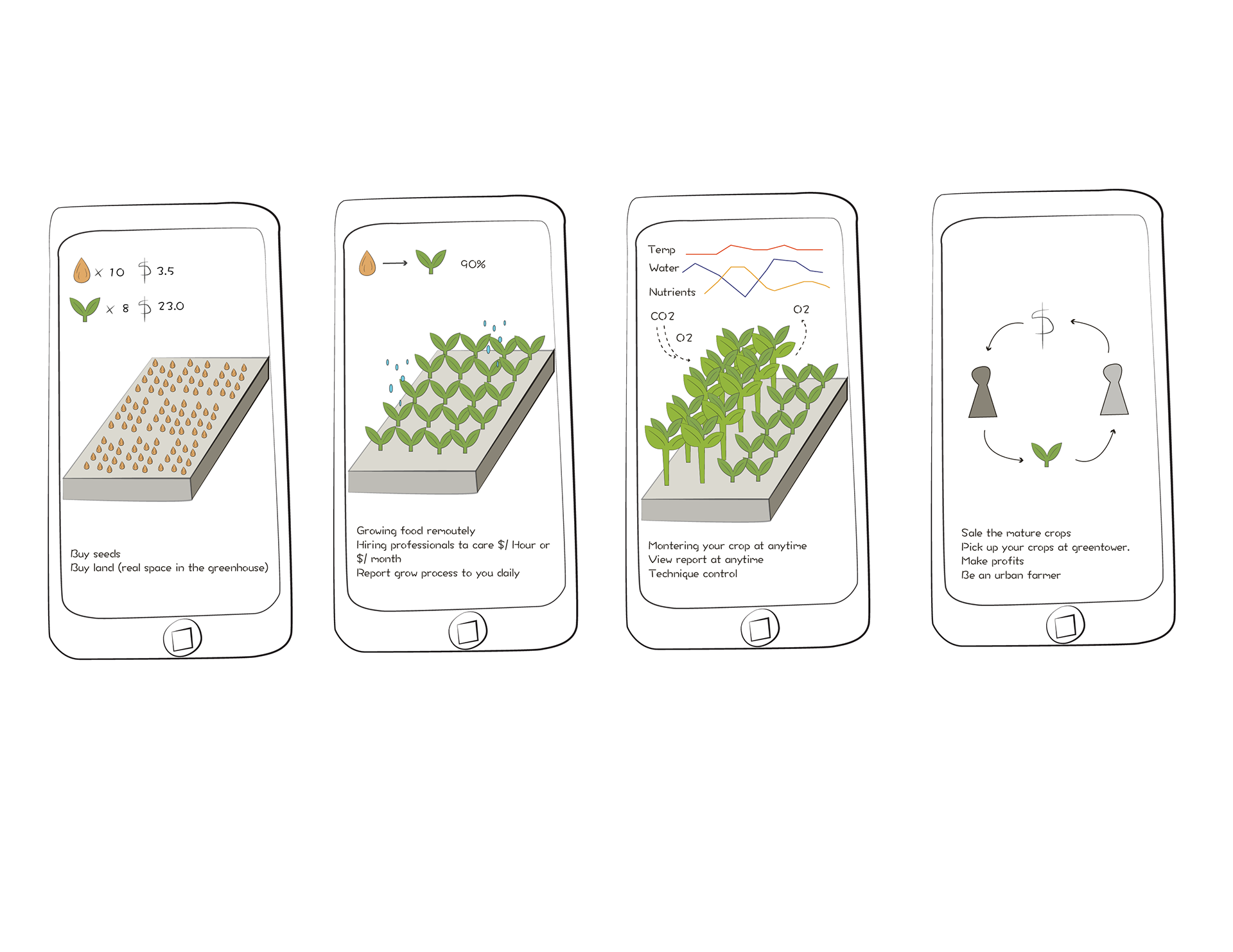
Version 2 Urban Farmer
As we redefine the urban farmer, this platform will encourage more people to become urban farmers, learning through the farming process. A person can purchase the seed and land from the greenhouse through the APP. After the purchase, a person should be responsible for taking care of the growing procedure remotely. Through the APP, people can view the whole growing process through real-time monitoring. The greenhouse will provide technical support and be an assistant for helping with the process. Finally, transactions can be accumulated through the APP. People can choose to keep their own production for consumption, but also can sell to others.
For the greenhouse, we can collect the data behind the farming and transaction activities. The data we collect will be the resources to evaluate the current situation, and we will be able to advocate a healthier eating habit. Moreover, the APP will also invite more people to come and visit our greenhouse and will encourage more people to engage the farming activity and become urban farmers.
Architecture Design
We open the lower level from ground level to the 4th floor by removing the cold concrete wall, extending the visual access to the riverbank landscape, and bringing livable greens into the building. These 4 floors include public space, cafeteria, market, conference room, and offices. It serves as a destination in the neighborhood providing a meeting place, rest areas, and socially engaging spaces. It also connects the building to the outside environment by replacing the wall with a see-through glass double facade to make the space more transparent and provide residents with a being-in-nature feeling. In addition, podiums on different floors, provide a green and rest space for the neighborhood and workers. Here, will be the first impression of the new productive green tower, we hope to use this bright space to attract more people becoming interesting in urban agriculture.
The food production will be concentrated from level 5 to 11 under an intelligent computer-controlled system. The wall on the west side of the tower will all be turned into the greenhouse box elevator to lift food ascend and descend. To ensure productivity, we increased the 7th-floor height to 6m. Each floor covers 350 m2 to satisfy the number of crops. 5 different sizes of Greenhouse boxes will also be produced here depending on markets requirements.
In addition to producing food, we take future research and public education into consideration. As a result, we propose a new research center located from floor 12 to 14. The research center will become an extension campus of universities to research more difficult technical problems for future greenhouse production, such as producing more tropical food. It also provides an urban agriculture training course for the public who are interested in food production.
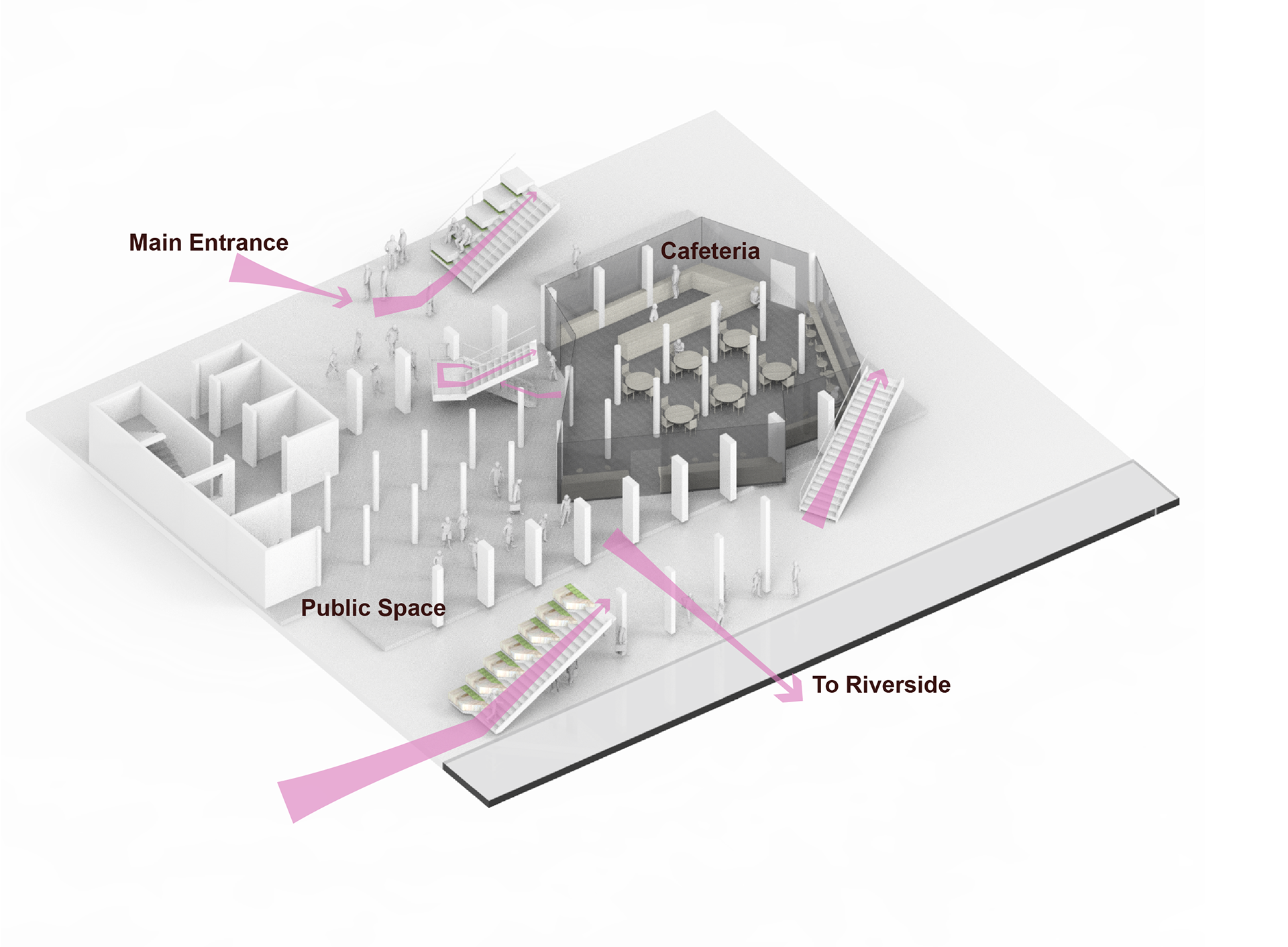
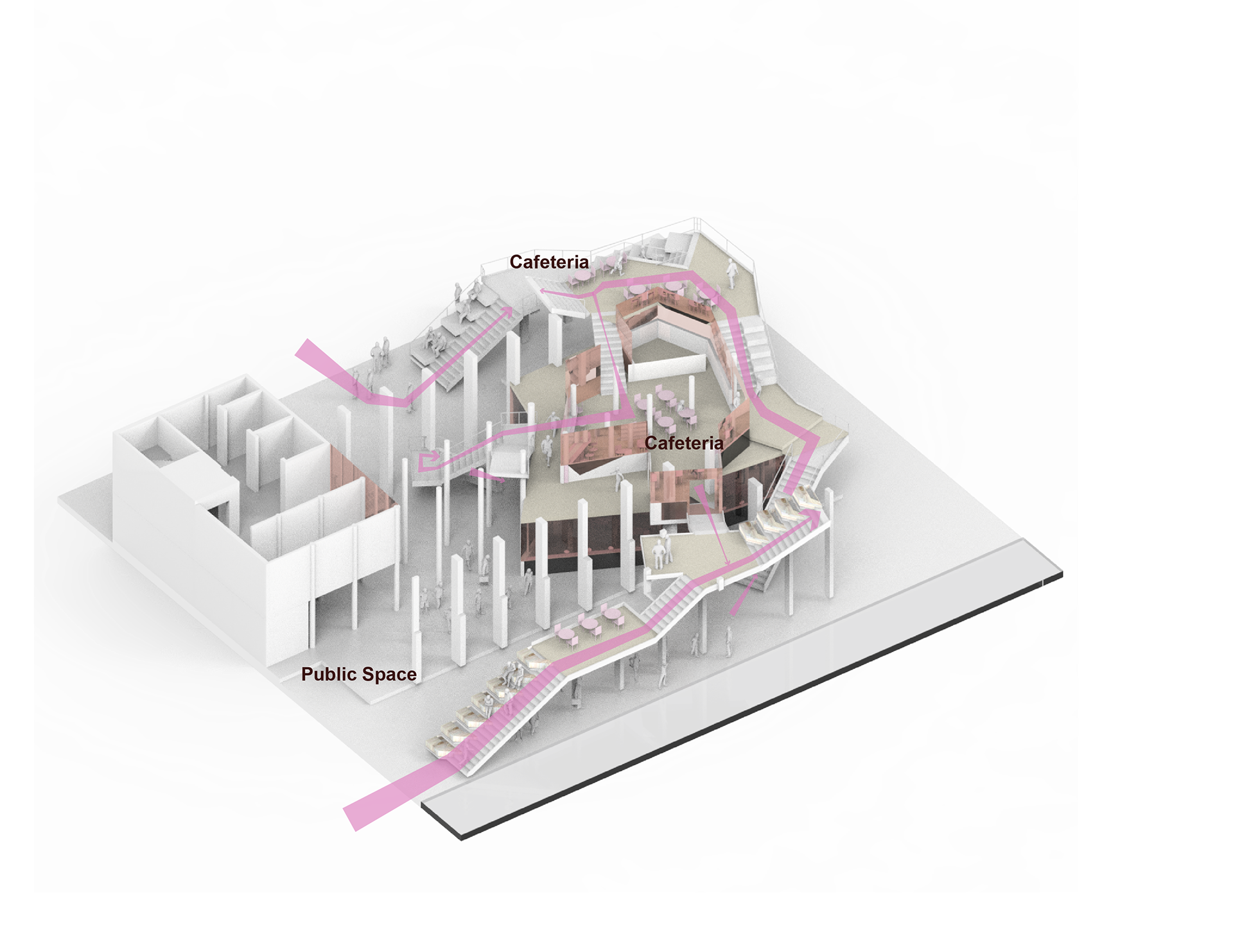
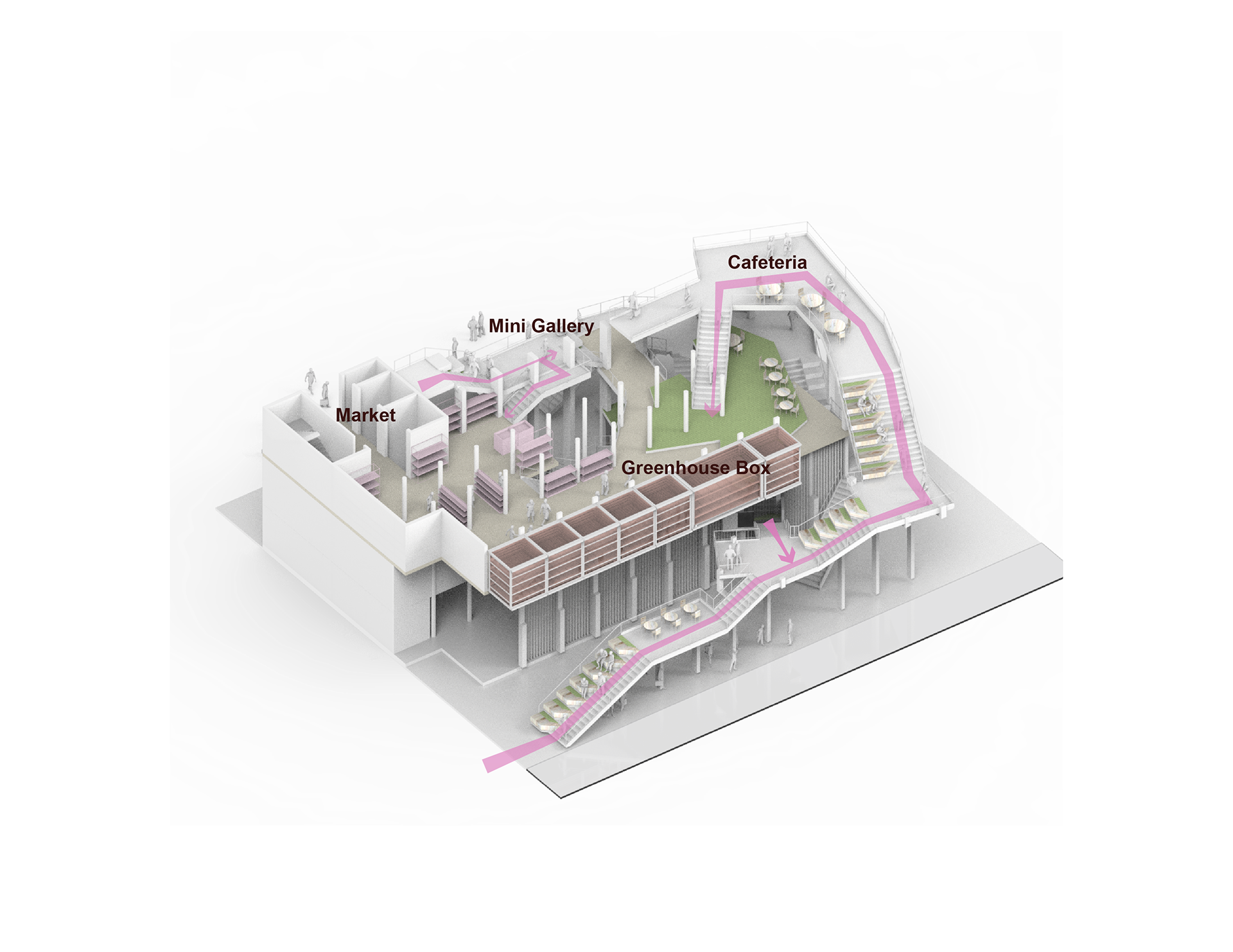
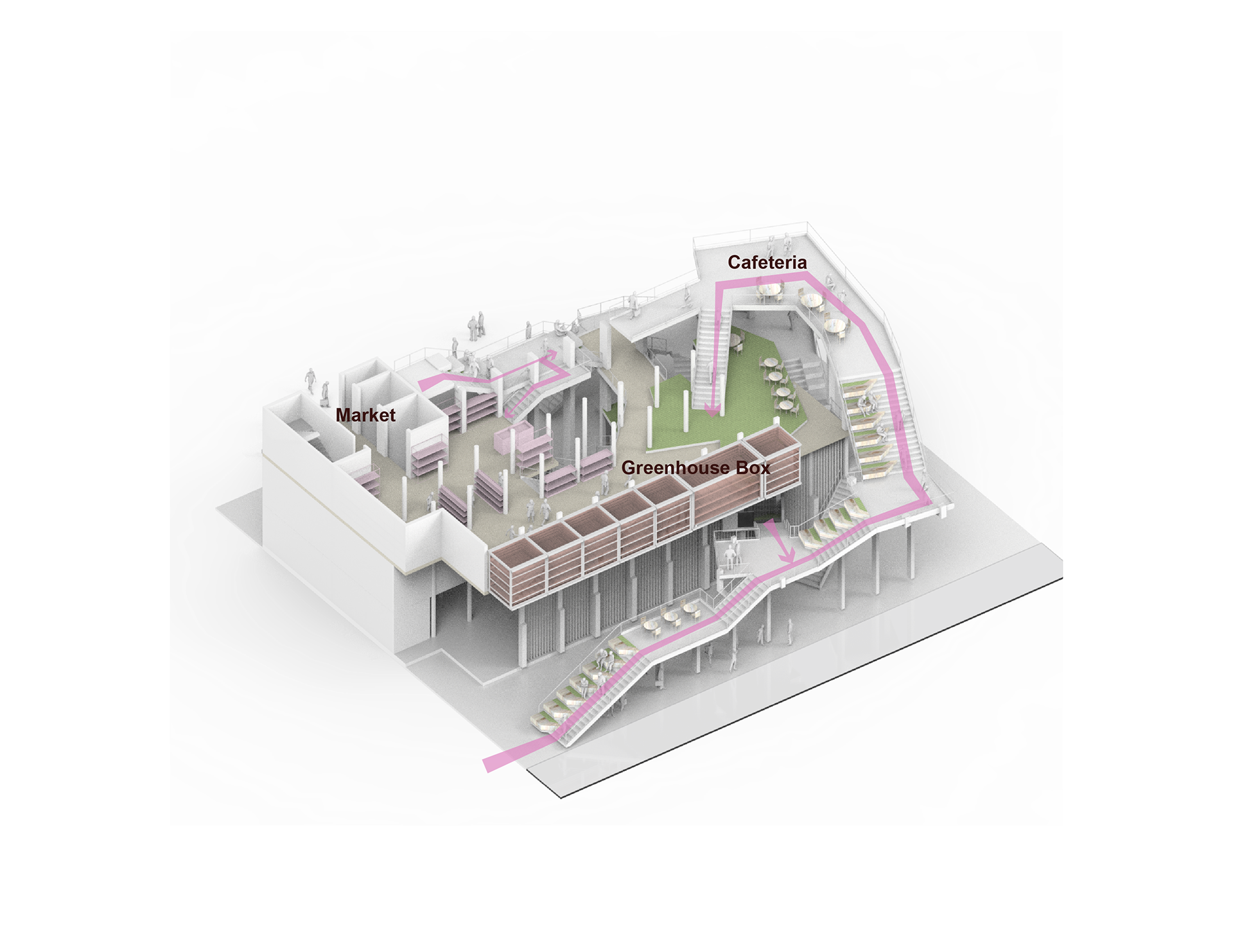
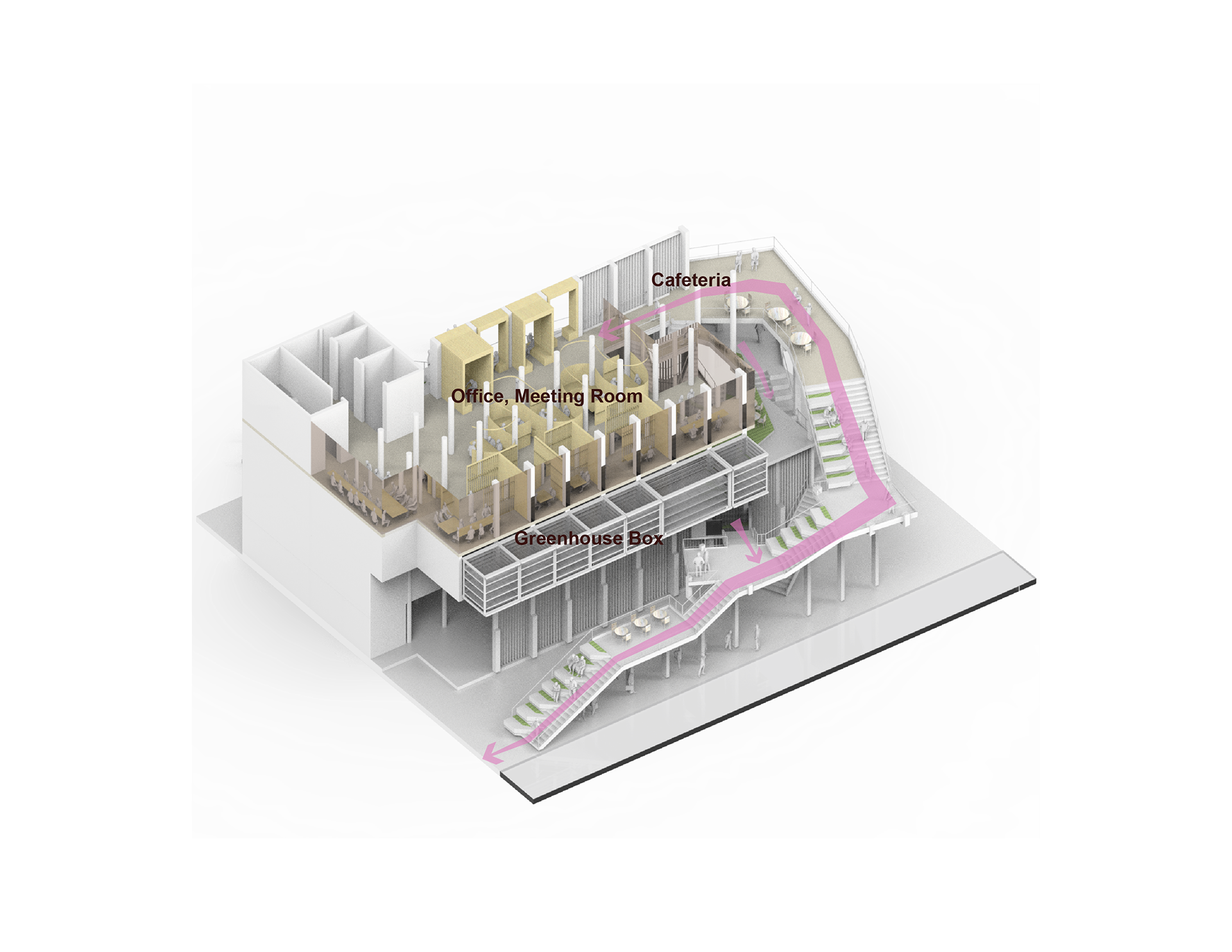
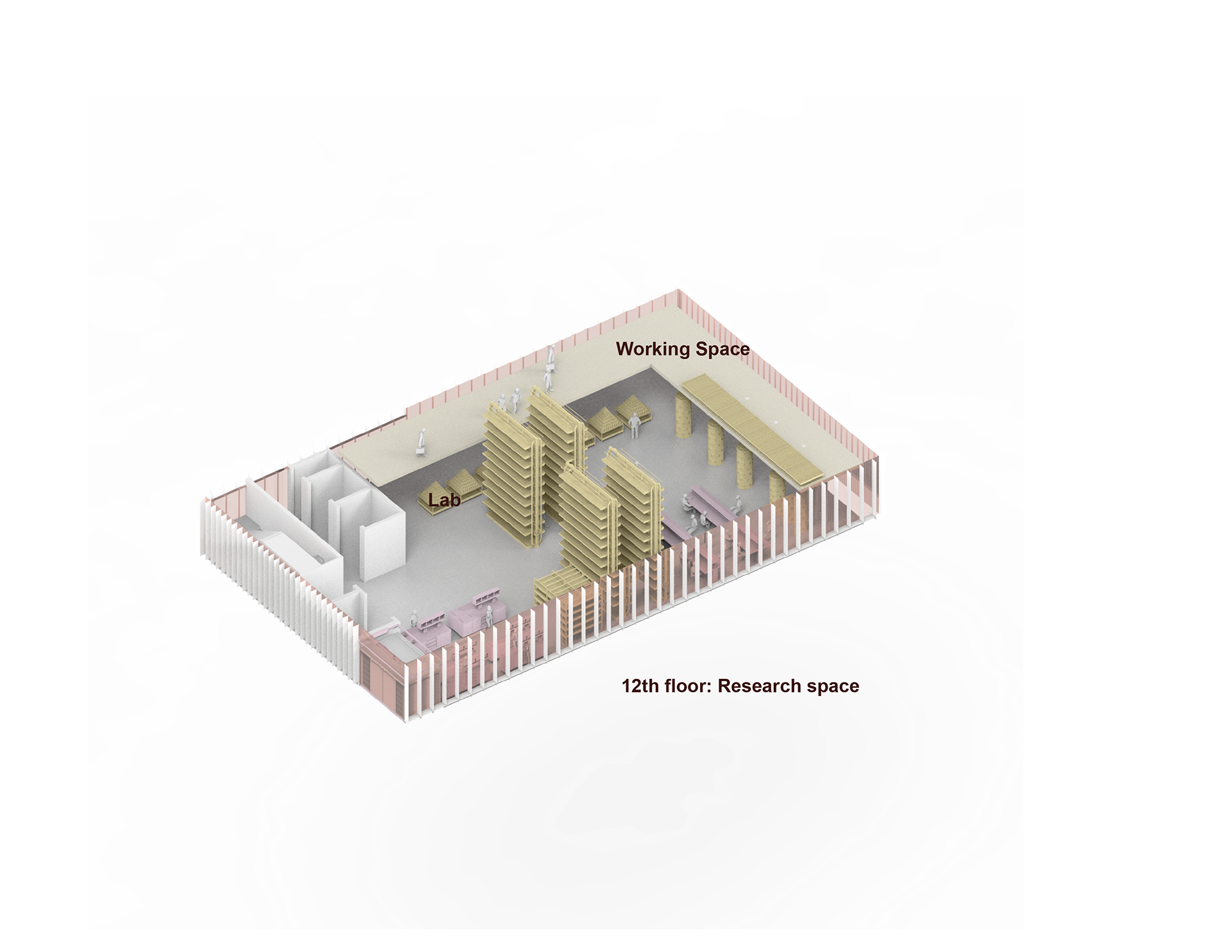
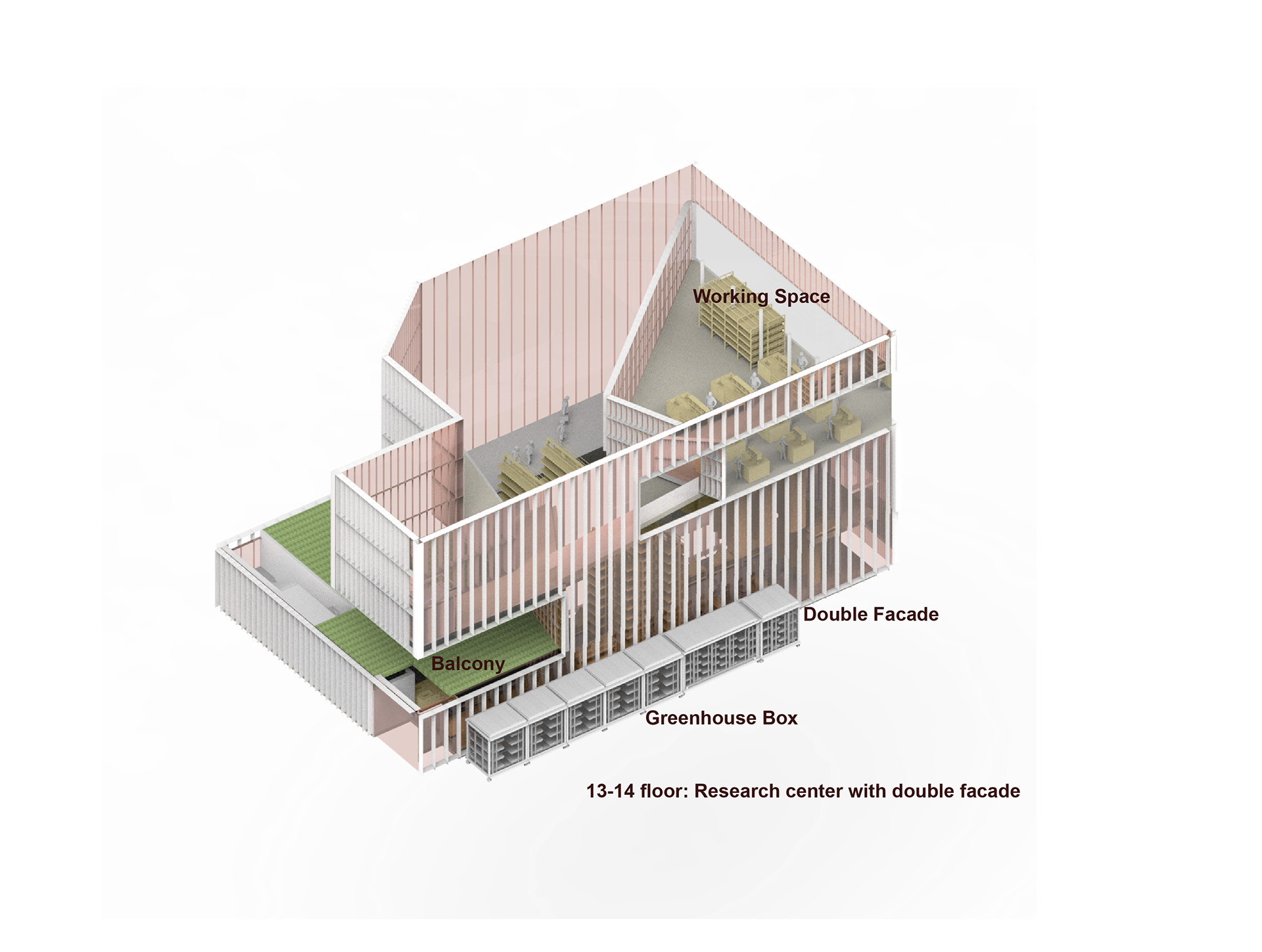
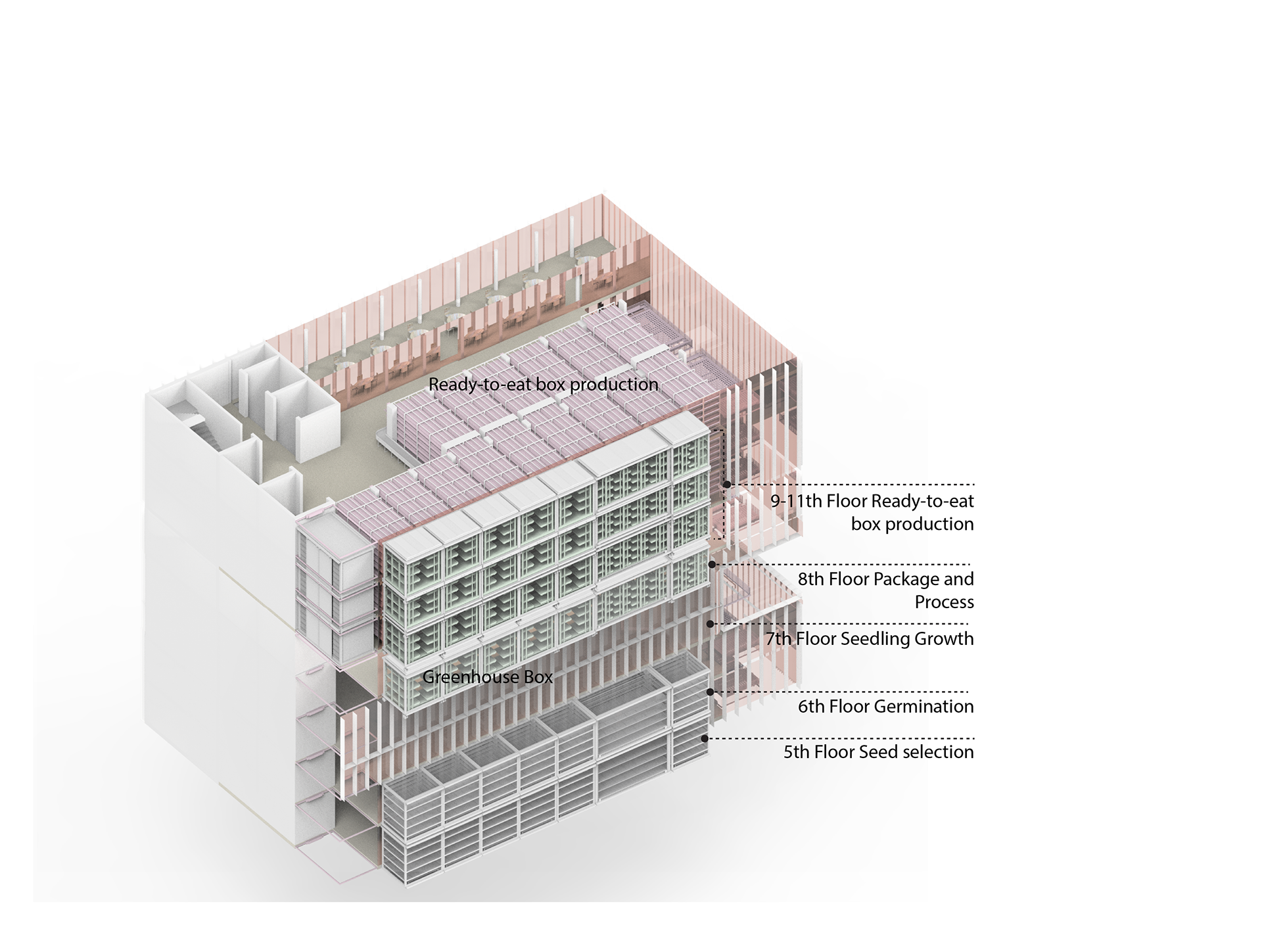
Food Production
When new neighborhoods establish, meeting the food requirement will be the first priority. As projected, around 3000 new residents will move into the Bijlmerbajes area. More than 90% population will be young and mid-age people. According to the research, Dutch consumers eat on average 1 kilo of foods and drink 2 liters of beverages daily, divided into breakfast, lunch, and dinner, and 4 in-between moments. Per person, we consume an average of about 350 grams of milk, 100 grams of meat (products), 125 grams of vegetables, and 125 grams of fruit and nuts per day. Since people under 50 years old consume more food than other ages, so we propose to promote people eat at least 200g vegetables and at least 200 g of fruit daily.4 As a result, we need to produce 600kg vegetables and 600kg vegetables per day to meet the consumption of the whole neighborhood. However, as research, breakfast provides 14% of the total daily energy intake, lunch 21%, dinner 36%, and in-betweens 30%. Vegetables, potatoes, meat, and fish are most often consumed during dinner. Fruit is most often consumed during lunch and between meals. We would like to provide enough quantity of vegetables and fruit that consumed during dinner and in-betweens. As a result, we assume to 66% of total daily vegetables and fruits intakes are coming from our greenhouse, in another word, we need to produce 396kg vegetables and 396kg of fruits per day.
Dietary Guidelines
Eat at least 200 g of vegetables and at least
200 g of fruit daily.
Eat at least 90 g brown bread, wholemeal bread, or other whole-grain products daily.
Eat legumes weekly.
Eat at least 15 g of unsalted nuts daily.
Eat one serving of fish, preferably oily fish, weekly.
Drink three cups of tea daily.
Limit the consumption of red meat, particularly processed meat.
Minimize the consumption of sugar-containing beverages.


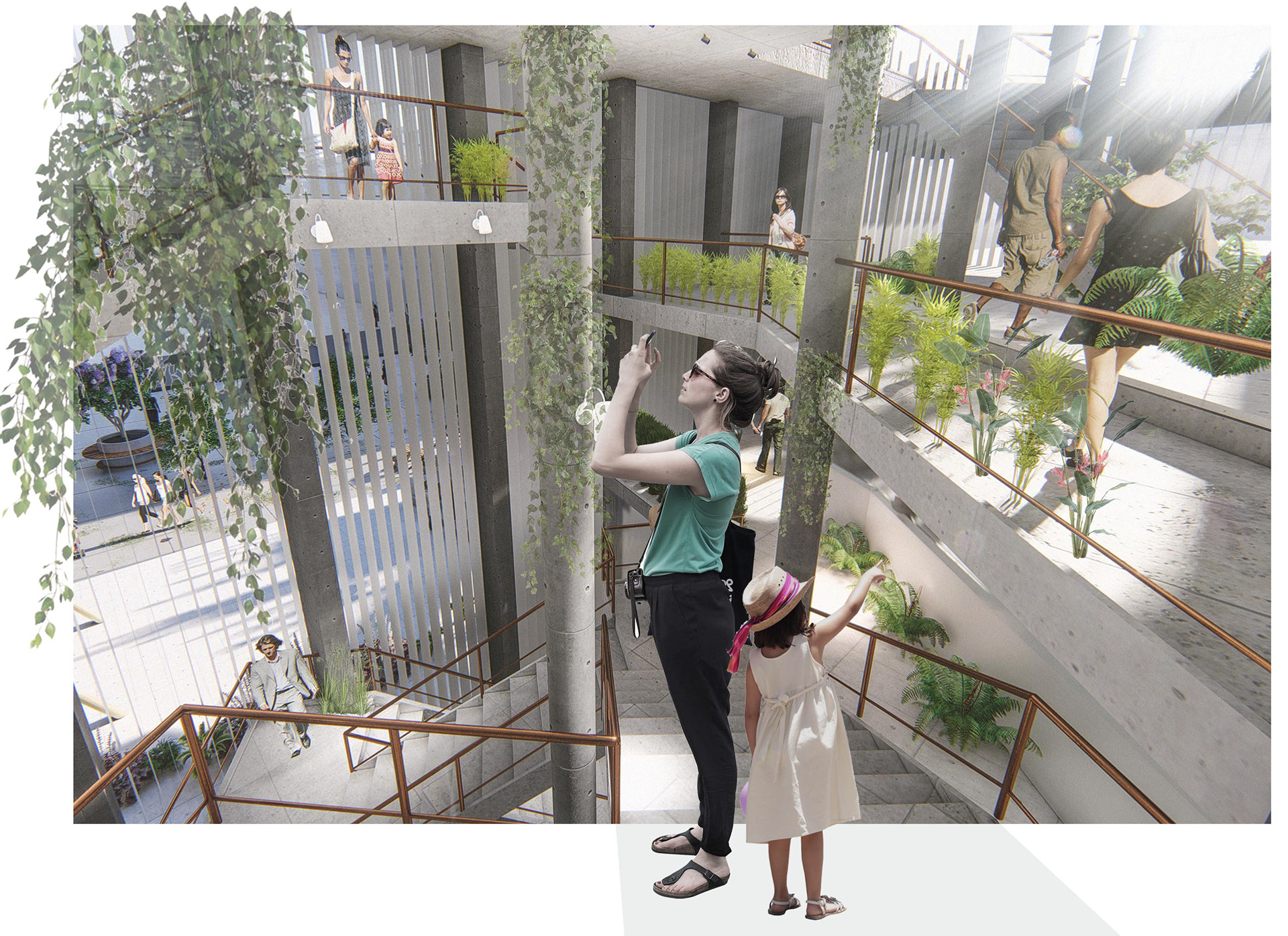
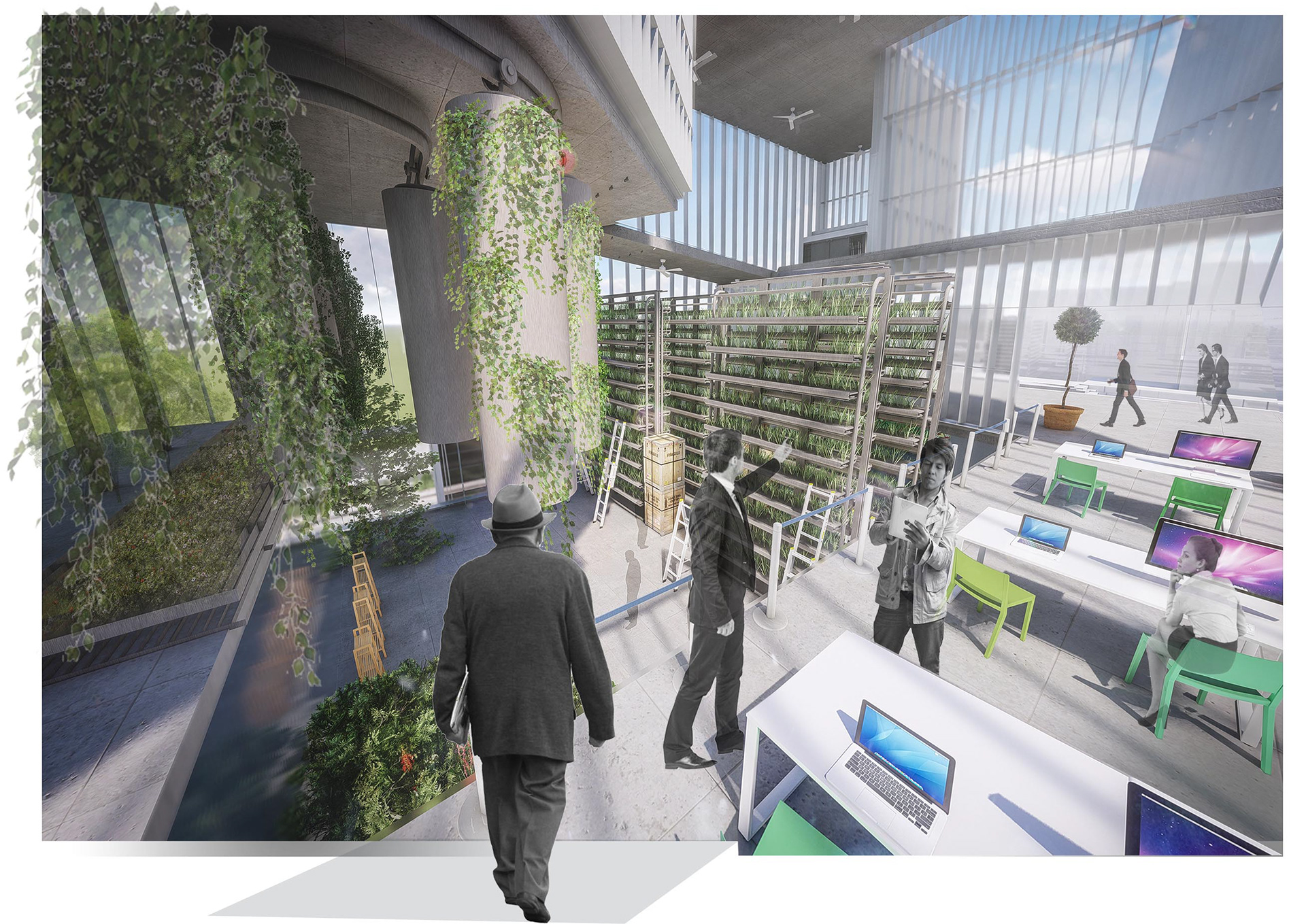

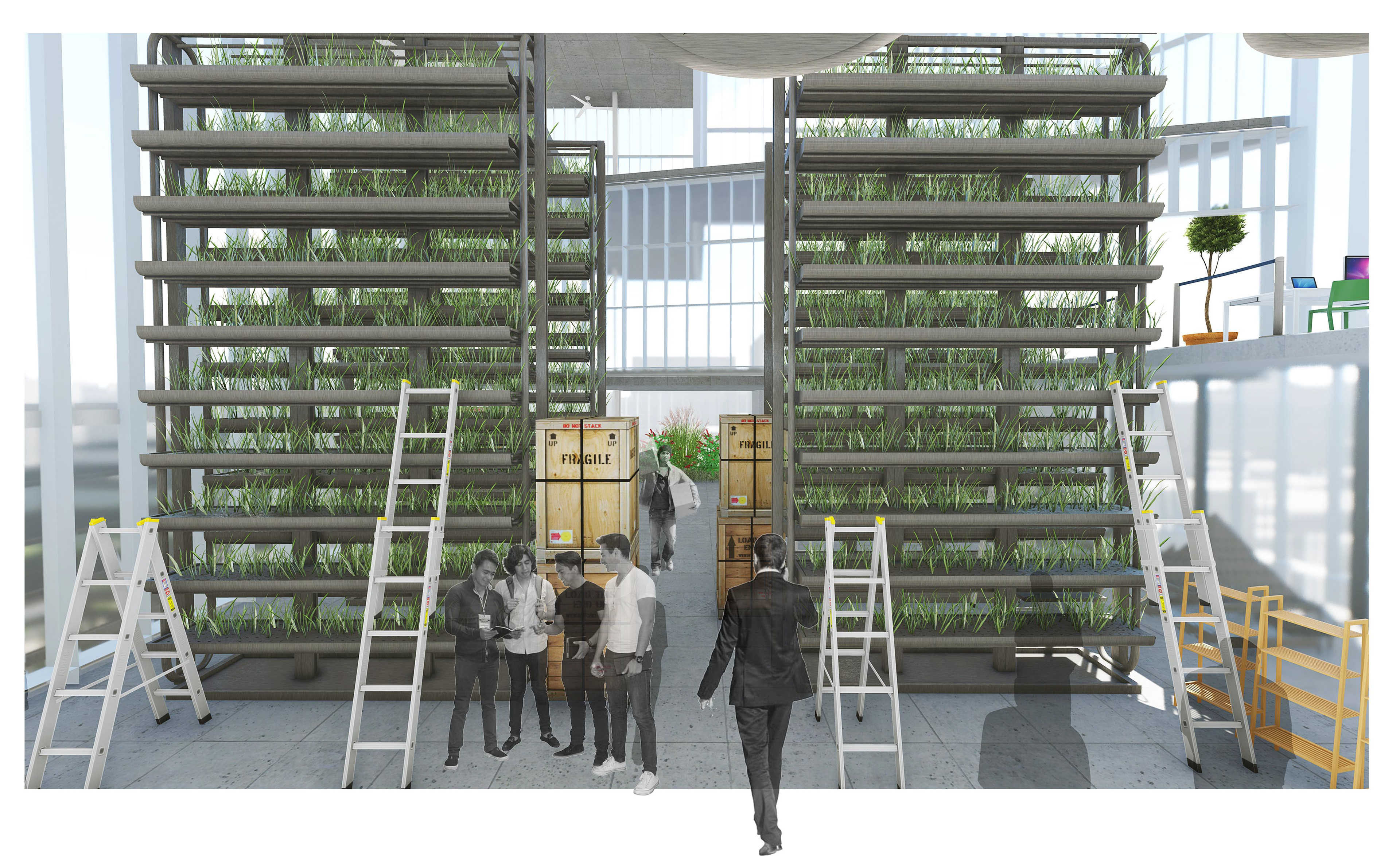
Based on the Triple Bottom Line thinking that “integrating profit, people, and the planet into the culture, strategy, and operations,”24 the project is working on “maintaining and increasing the value of economic output while simultaneously decreasing the impact of economic activity upon ecological systems”25 to obtain the sustainable development. We are trying to incorporate partnerships from government, technical support, and system optimization perspectives, to support various programs and create different relationships with the customer.
By leveraging the newly created culture platforms-- the “Joy Farm” APP, and flexible greenhouse box, we target at linking digital techniques, greenhouse food production, and people’s life all three-part together to achieve intelligent sustainability. As a result, the project can generate revenues from diverse business activities through various business channels. The new tower itself serves as a destination to enhance social engagement and also the design adds aesthetics to the surrounding environment. Through the program accumulation, we are hoping to encourage the conversation, reinforce the societal culture as diversity, sufficiency, responsibility, and collaboration.